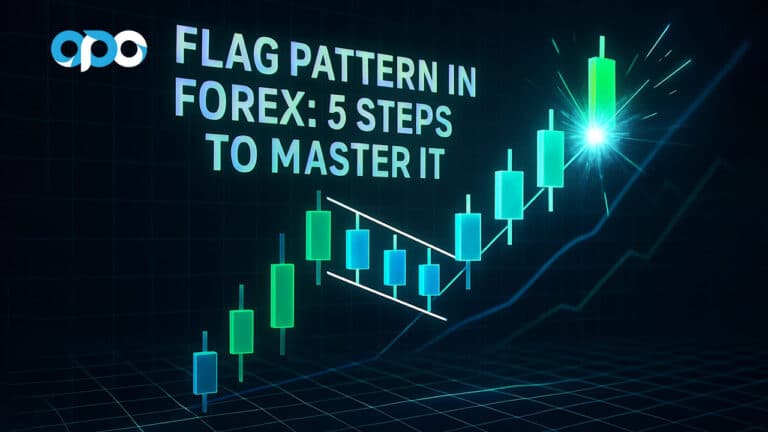Feeling tossed around by the unpredictable waves of the Forex market? It’s a common frustration for traders trying to find a stable path to profit, often getting caught in strategies that feel more like gambling than calculated moves. This uncertainty can lead to anxiety and losses. But what if there was a way to trade based on probabilities and data, not just directional guesses? Enter statistical arbitrage in forex. This quantitative approach, often favored by institutional players and accessible via a good online forex broker, focuses on small, statistically likely price corrections between related assets. In this article, we’ll dive into what statistical arbitrage in forex is, how it works, the strategies involved, and what you need to consider.
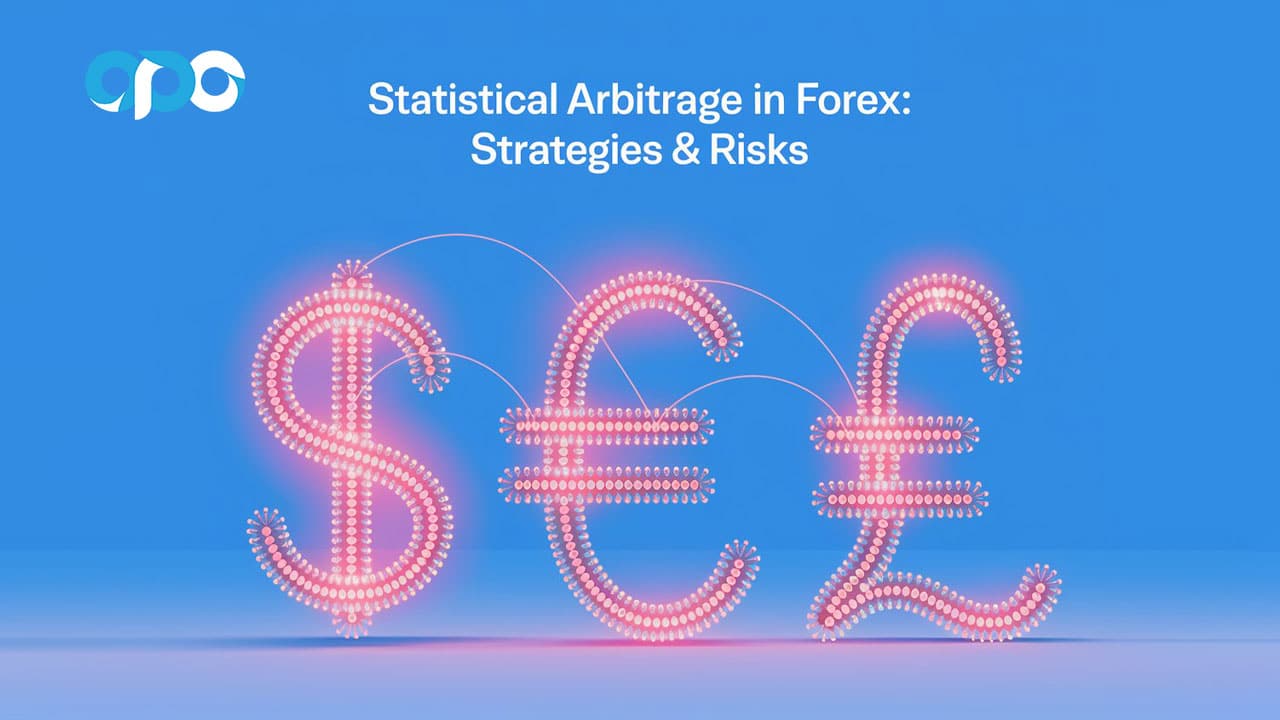
Introduction to Statistical Arbitrage (Stat Arb)
So, what exactly is this “Stat Arb” thing? Think of statistical arbitrage as a trading style that uses math and stats to hunt for tiny, temporary price differences between related financial instruments, like certain currency pairs. It’s a numbers game, aiming to profit from expected price adjustments rather than predicting the market’s overall direction. Understanding statistical arbitrage is key before applying it to currencies.
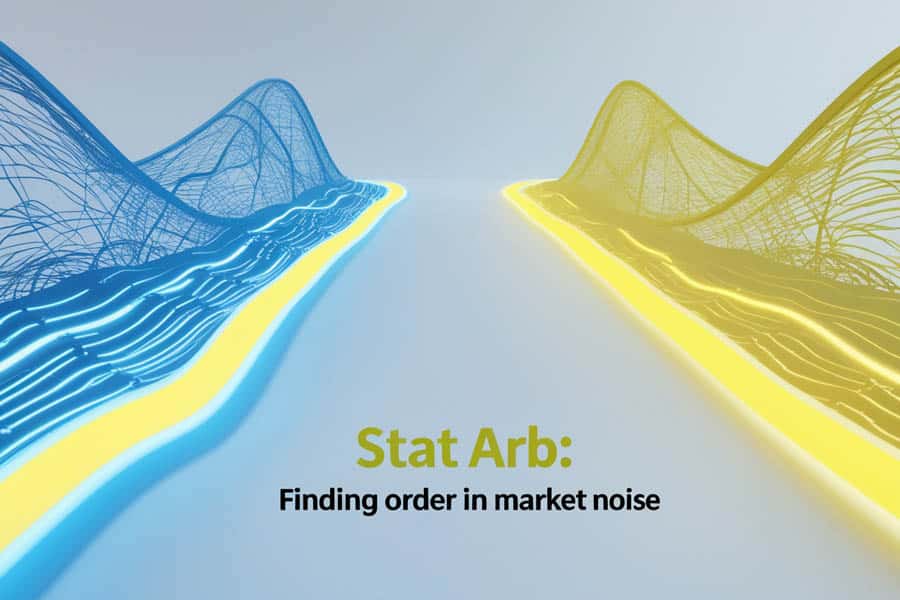
What is Statistical Arbitrage?
Essentially, statistical arbitrage looks for pairs or groups of assets whose prices usually dance together in a predictable way. When one momentarily steps out of line – one becomes slightly overpriced or underpriced relative to the other based on their historical relationship – Stat Arb strategies jump in. The idea is to buy the cheap one and sell the expensive one, betting that they’ll soon fall back in sync. It’s heavily reliant on computer models and often automated trading, forming the basis of many quantitative approaches.
How Stat Arb Differs from Traditional Arbitrage
You might have heard of “risk-free” arbitrage, where someone buys an asset in one market and instantly sells it for a higher price in another. That’s traditional arbitrage, exploiting identical assets priced differently. It’s rare and disappears fast. Statistical arbitrage is different because it deals with assets that are related but not identical. The bet is that their statistical relationship will hold true, but there’s no guarantee. So, unlike traditional arbitrage, Stat Arb involves calculated risk – it’s about playing the probabilities derived from data.
The Law of One Price and Market Efficiency
In theory, identical things should cost the same everywhere – that’s the Law of One Price, and traditional arbitrage helps enforce it. Statistical arbitrage works because markets, while mostly efficient, aren’t perfectly efficient all the time. Tiny, short-lived inconsistencies pop up due to trading activity, news reactions, or temporary imbalances. Stat Arb aims to profit from the market’s tendency to correct these small blips and return to a state of relative efficiency. These inefficiencies provide the foundation for statistical arbitrage in forex.
Brief History/Origin
While traders have used quantitative methods for ages, modern statistical arbitrage really took off in the 1980s. A famous early example was a secretive group at Morgan Stanley, led by Nunzio Tartaglia. They built complex computer programs to find and trade small price discrepancies, mostly in stocks. Their success showed the power of this quantitative approach and inspired many hedge funds and trading firms to develop their own Stat Arb capabilities, eventually leading to statistical arbitrage in forex markets.

Read More: Forex Diversification Strategies
Statistical Arbitrage in the Forex Market
The Forex market, being the giant, constantly moving beast it is, offers some unique advantages for traders looking to apply statistical arbitrage techniques. While you might hear about Stat Arb more often in stocks, it’s definitely a strategy used in currency trading too. Exploring statistical arbitrage in forex requires understanding these market specifics.

Why Apply Statistical Arbitrage to Forex?
What makes Forex a good playground for Stat Arb?
- Massive Liquidity: It’s the world’s biggest market, meaning you can usually get in and out of trades quickly without your own order massively impacting the price. This is vital for Stat Arb, which often relies on capturing small profits.
- Plenty of Wiggle Room (Volatility): Currencies are always adjusting based on economic news, central bank gossip, and world events. This constant movement creates the temporary price gaps that Stat Arb strategies feed on.
- Always Open (Almost): Trading happens around the clock, five days a week. This gives strategies more time to find opportunities compared to stock markets that close overnight.
- Lots of Pairs to Play With: With so many currency pairs available, there are numerous potential relationships to analyze and trade, allowing for diversification within the strategy itself. This breadth is ideal for statistical arbitrage in forex.
Specific Characteristics of Forex Relevant to Stat Arb
Currencies often move together for understandable reasons. Think about the Australian Dollar (AUD) and the New Zealand Dollar (NZD) – both are sensitive to commodity prices and general risk appetite. Or consider how the Euro (EUR) and British Pound (GBP) might react similarly to European economic news. These underlying economic ties create the correlations and cointegration relationships that Stat Arb models look for. Interest rate differences also play a big role in Forex, influencing longer-term pair behavior, which models for statistical arbitrage in forex need to account for.
Is Statistical Arbitrage Common in Forex?
Absolutely. While maybe not the talk of the town among everyday retail traders, statistical arbitrage in forex is a known strategy used by quantitative hedge funds, specialized trading firms, and banks. These players have the tech and the brainpower. However, skilled retail traders with a knack for coding and stats can also implement simpler versions, particularly pairs trading, often using platforms provided by a capable forex trading broker. A well-designed statistical arbitrage forex trading strategy can be viable even for smaller players with the right tools.
Core Concepts and Principles
To really get statistical arbitrage, you need to grasp a few key ideas from the world of stats and finance. These are the building blocks for crafting a potentially successful statistical arbitrage forex trading strategy.

Read More: Hedging strategies in forex trading
Mean Reversion: The Foundation
This is a big one. Mean reversion is the idea that prices tend to eventually drift back towards their average or typical level. For Stat Arb, this usually applies to the difference (or “spread”) between two related currency pairs. If two pairs that normally move in sync drift unusually far apart, a mean reversion strategy bets that this gap will close, and prices will revert to their historical average relationship. Many a statistical arbitrage forex trading strategy is built on this principle.
Correlation and Cointegration
These help identify pairs that might work together:
- Correlation: Simply measures if two pairs tend to move in the same direction (positive correlation) or opposite directions (negative correlation). It’s a useful starting point for statistical arbitrage in forex, but correlations can change or be misleading.
- Cointegration: This is a stronger statistical bond. If two pairs are cointegrated, it means they share a long-term equilibrium relationship, even if they wander off temporarily. Think of it like two drunk friends walking down the street – they might stumble apart for a bit, but they generally stick together over the long run. A combination of cointegrated pairs (like their spread) is likely to be “stationary,” meaning it tends back towards an average. This is crucial for robust statistical arbitrage strategies.
Spreads: Calculating the Difference
In pairs trading, a key part of statistical arbitrage in forex, the “spread” is usually the calculated difference between the prices of the two cointegrated pairs, sometimes adjusted by a “hedge ratio” to balance the trade. For instance, if EUR/USD and GBP/USD are buddies (cointegrated), the spread might be `Price(EUR/USD) – ratio Price(GBP/USD)`. The strategy then watches this calculated spread value, looking for moments when it strays too far from its usual average.
Stationarity and Statistical Tests
A “stationary” data series is one whose basic statistical properties (like its average and volatility) don’t change over time. Mean reversion strategies rely on the spread being stationary. To check this formally, traders use statistical tests like the Augmented Dickey-Fuller (ADF) test. If the ADF test suggests the spread is stationary, it lends statistical support to the idea that it will revert to its mean, backing up the trading strategy.
Probability and Statistical Edge
Let’s be clear: statistical arbitrage isn’t about finding guaranteed wins. It’s about playing the odds. Strategies aim to find situations where prices are more likely to revert than to drift further apart. The “edge” comes from making many trades where the probability is slightly in your favor. Some trades will lose, but over time, the statistical edge from your statistical arbitrage forex trading strategy should hopefully lead to overall profit. This requires discipline and a solid plan.
Common Statistical Arbitrage Forex Strategies
Okay, we’ve covered the theory. Now, let’s look at some common ways traders try to implement statistical arbitrage in forex. The most popular kid on the block is definitely pairs trading.

Forex Pairs Trading
This is the classic Forex Stat Arb approach. It’s all about finding two currency pairs that historically move in a related way (ideally, they are cointegrated). This is a fundamental statistical arbitrage forex trading strategy.
Identifying Cointegrated Currency Pairs
First, you need data – lots of historical price data. You screen pairs, looking for ones that seem to track each other. Then comes the math: using statistical tests (like Engle-Granger or Johansen, often after checking individual pairs with ADF) to confirm if there’s a genuine long-term relationship (cointegration). Pairs like AUD/USD and NZD/USD (both commodity dollars) or EUR/CHF and USD/CHF (both involving the Swiss Franc) are sometimes candidates for statistical arbitrage in forex.
Calculating the Spread Ratio
Once you have a cointegrated pair (say, Pair A and Pair B), you need to figure out the right mix – the hedge ratio. How much of Pair B do you trade for every unit of Pair A to create a balanced, stationary spread? This often comes from the cointegration analysis itself or simple regression. The spread is then tracked, maybe as `Spread = Price(Pair A) – hedge_ratio Price(Pair B)`.
Defining Entry/Exit Rules
The system watches the calculated spread. When does it trade? Typically, when the spread wanders “too far” from its average, often measured in standard deviations (a statistical measure of dispersion). These rules are core to any statistical arbitrage forex trading strategy.
- Entry: If the spread drops, say, 2 standard deviations below average, the system might buy the spread (Buy Pair A, Sell Pair B). If it climbs 2 standard deviations above, it sells the spread (Sell Pair A, Buy Pair B).
- Exit: The trade is closed when the spread returns to its average, or maybe gets close (e.g., crosses back inside 0.5 standard deviations). Crucially, you also need a stop-loss – if the spread goes wildly against you, get out! This signals the relationship might have broken down.
Example of a Forex Pairs Trade
Imagine AUD/USD and CAD/USD are found to be cointegrated. Let’s say their calculated spread usually averages 0.0050 with a standard deviation of 0.0025. If the spread suddenly drops to 0.0000 (which is 2 standard deviations below the average: 0.0050 – 20.0025 = 0.0000), the strategy might trigger: Buy AUD/USD and Sell CAD/USD (in the correct hedge ratio). The hope is the spread climbs back toward 0.0050. If it does, you close for a profit. If it keeps falling to your stop-loss level, you close for a loss. This illustrates a simple statistical arbitrage in forex trade.
Index Arbitrage (as applicable to Forex)
This is slightly different. Think of the US Dollar Index (DXY), which tracks the dollar against a basket of other currencies. An index arb strategy might involve trading the DXY future against the actual basket of component currencies if their values diverge significantly. These chances are usually very small and very fast, demanding quick execution. It’s a niche area within statistical arbitrage in forex.
Basket Trading Strategies
Instead of just two pairs, you can build custom baskets. Maybe you find that a basket of commodity currencies (AUD, NZD, CAD) tends to revert to its mean relative to a basket of “funding” currencies (like CHF, JPY). When the relative value of these baskets diverges historically, you trade the whole long basket against the whole short basket. It’s more complex but allows for different kinds of relationships within the realm of statistical arbitrage.
Triangular Arbitrage
Important note: Triangular arbitrage is often mentioned but is usually deterministic, not statistical in the same way as pairs trading. It looks for direct mispricings between three pairs (like EUR/USD, GBP/USD, and EUR/GBP). If the rate implied by the first two doesn’t match the third directly quoted rate, a theoretical risk-free profit exists by trading all three instantly. In reality, computers snap these up almost instantly in liquid markets. While execution speed matters (a statistical consideration), the opportunity itself isn’t based on a mean-reverting statistical relationship like cointegration, setting it apart from typical statistical arbitrage in forex.
Developing and Implementing a Forex Stat Arb Strategy
Okay, theory’s nice, but bringing a statistical arbitrage forex trading strategy to life is a serious undertaking. It needs careful planning, good data, solid tech, and strict execution discipline.
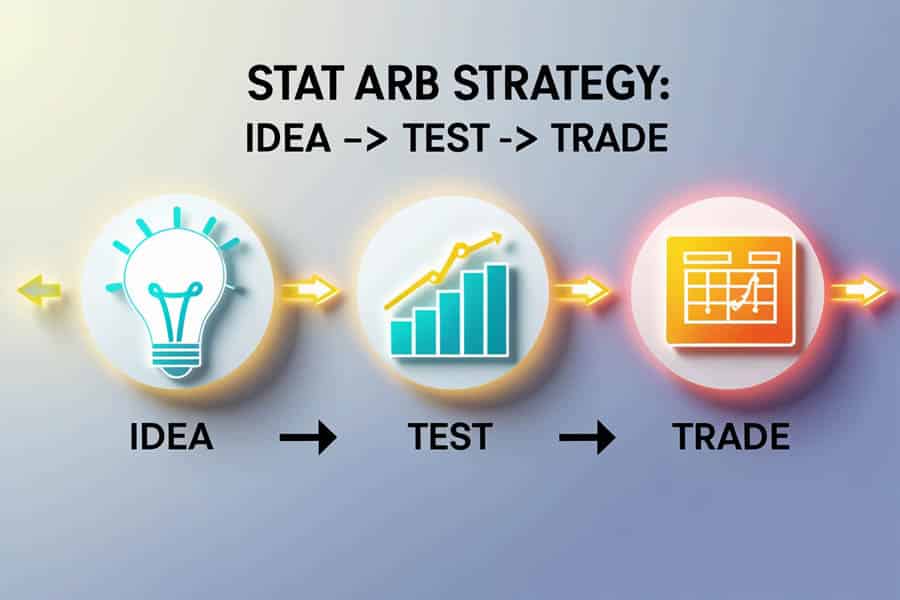
Data Requirements
Good data isn’t just important; it’s essential for any statistical arbitrage in forex endeavor. You’ll need:
- Historical Data: Plenty of clean, detailed historical price data (minute-by-minute or even tick-by-tick) for your chosen currency pairs. This fuels the model building and testing.
- Real-Time Data: A fast, reliable stream of live market prices to generate trading signals and manage open positions accurately.
Garbage in, garbage out – bad data (missing info, errors) will wreck your analysis and strategy.
Model Building
This is where you translate your trading idea into computer code and statistical rules for your specific statistical arbitrage forex trading strategy.
Choosing the right statistical models
This involves selecting the appropriate statistical tools – maybe time series analysis (like ARIMA), regression for finding hedge ratios, those cointegration tests we mentioned (ADF, Johansen), or even exploring machine learning for finding more complex patterns.
Parameter optimization
Your model will have settings (like how far back to look for calculating averages, or how many standard deviations trigger a trade). These need tuning, usually based on historical data. But be careful not to “over-optimize” – finding settings that only work on the past data you tested.
Backtesting
This is critical! Backtesting means running your strategy simulation on past data to see how it would have performed. A thorough backtest of your statistical arbitrage forex trading strategy must:
- Include realistic costs (spreads, commissions).
- Estimate potential slippage (the difference between the price you wanted and the price you got).
- Test on data the model hasn’t seen before (out-of-sample testing) for a reality check.
- Look at key performance stats (profitability, risk metrics like drawdown).
- See how results change if you tweak parameters slightly (sensitivity analysis).
Skipping rigorous backtesting or being overly optimistic here is a recipe for disappointment when implementing statistical arbitrage in forex.
Read More: Forex Basket Trading Strategy
Choosing Currency Pairs
When picking pairs for strategies like pairs trading, think about:
- Liquidity: More liquid pairs (like the majors: EUR/USD, USD/JPY) usually have tighter spreads and less slippage, which helps profitability.
- Trading Costs: Lower spreads and commissions mean more potential profit stays in your pocket.
- Relationship Stability: Look for pairs whose statistical link makes fundamental sense and seems likely to persist, rather than just a random short-term correlation. This is vital for long-term statistical arbitrage in forex success.
Execution
Getting the trades done right is key to capturing the small edges in statistical arbitrage in forex.
Generating Entry and Exit Signals
The automated system constantly watches the live data, firing off buy or sell signals when the model’s conditions are met.
Order types and execution algorithms
Just hitting “market order” might lead to bad fills (slippage) in fast markets. Limit orders guarantee price but might not execute. Professionals often use smart algorithms designed to minimize price impact when getting in or out, especially for larger sizes.
Importance of Low Latency
Speed matters. Stat Arb opportunities can vanish in milliseconds. Reducing delays (latency) between signal, order, and execution – sometimes by having servers physically close to the broker’s (co-location) – is crucial, especially for faster versions of these strategies, including high-frequency statistical arbitrage in forex.
Tools and Technology for Forex Stat Arb
You can’t really do statistical arbitrage with just a basic charting package. It demands a specific toolkit, blending trading platforms, programming muscle, and data handling capabilities. Success with statistical arbitrage in forex often hinges on this infrastructure.
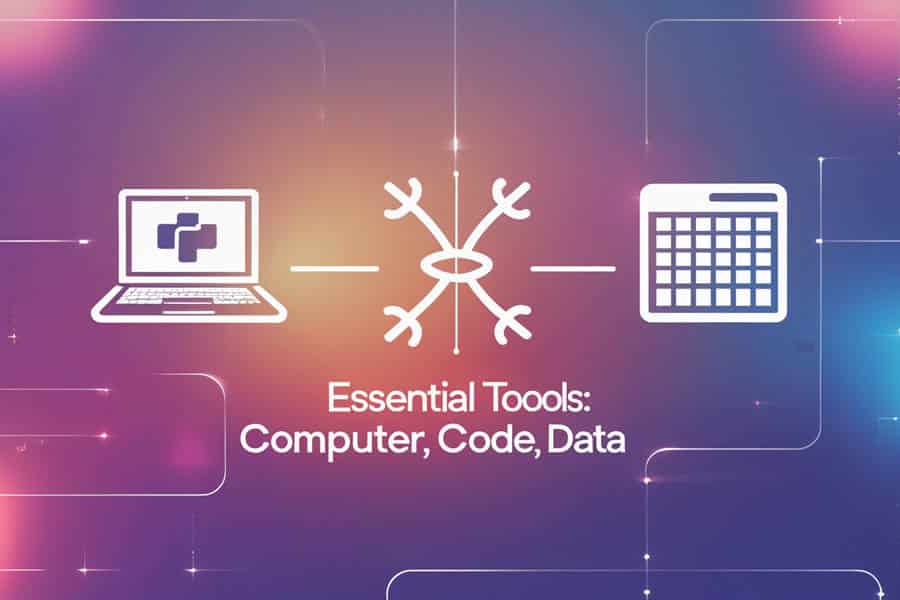
Trading Platforms
The platform needs to support your analysis and automation needs:
- MT4/MT5, cTrader: These are popular choices, especially for retail traders stepping into automation. They allow running automated strategies (Expert Advisors in MT4/5, cBots in cTrader) coded in their respective languages (MQL, C#). Good for simpler strategies if ultra-low speed isn’t the top priority. Many traders find a reliable broker for forex trading offering these.
- Specialized API-based platforms: Serious quants and institutions often bypass standard platforms. They build custom software that talks directly to the broker’s system via an API (Application Programming Interface). This gives maximum control, flexibility, and the potential for the lowest latency (fastest execution).
Programming Languages
Coding skills are pretty much essential for developing a statistical arbitrage forex trading strategy:
- Python: Hugely popular in the quant world. It has amazing libraries for handling data (Pandas, NumPy), doing stats (StatsModels), machine learning (Scikit-learn), and building backtesters (like Backtrader). Great for analysis and connecting to APIs.
- R: Another strong choice, especially favored by those with a heavy statistics background. Excellent for data analysis and modeling.
- MQL4/MQL5: The native languages for coding automated strategies on MetaTrader platforms.
- C++/Java: Often the choice for building very high-speed trading systems where every microsecond counts.
Software & Libraries
You’ll rely on specific software tools:
- Statistical Packages: These are collections of pre-built functions within languages like Python or R that perform the necessary statistical tests (ADF, cointegration tests), regressions, etc.
- Backtesting Engines: Frameworks designed specifically for simulating trading strategies on historical data, handling simulated orders, costs, and performance tracking.
- Databases: You need somewhere efficient to store potentially huge amounts of historical price data (SQL databases or specialized time-series databases).
Data Feeds
Access to clean, accurate, and fast market data is vital. This might come directly from your broker for forex through their platform or API, or you might subscribe to specialized data providers, especially if you need very high-resolution tick data for your statistical arbitrage approach.
Risk Management in Forex Stat Arb
It might sound safer than betting on market direction, but don’t be fooled – statistical arbitrage in forex has its own set of risks. Managing these risks effectively is absolutely critical for survival and long-term success.
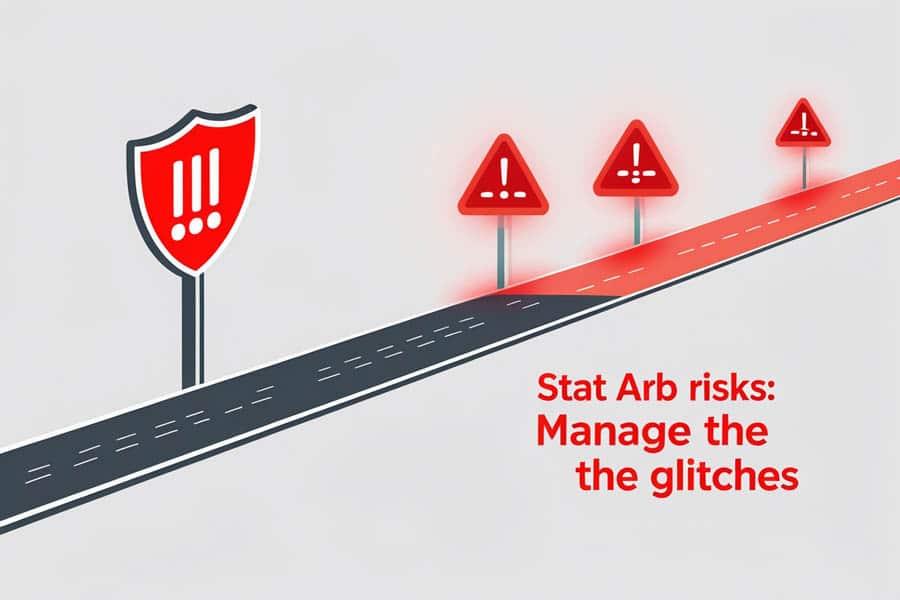
Model Risk
This is a big one. What if the nice statistical relationship your model found just… stops working? Maybe a central bank makes a surprise announcement, a political crisis erupts, or the underlying economic link between two currencies changes. If the relationship breaks down, a strategy betting on mean reversion can lose money quickly as the spread blows out instead of returning to normal. You constantly need to monitor if the model’s assumptions still hold true for your statistical arbitrage forex trading strategy.
Execution Risk
This covers everything that can go wrong when you actually try to place a trade:
- Slippage: Getting filled at a worse price than you expected. This happens, especially when the market is moving fast or isn’t very liquid. It eats into profits or makes losses bigger.
- Tech Glitches: Your platform crashes, your internet goes down, the broker’s server has issues – any of these can prevent you from entering, exiting, or managing trades correctly.
- Latency: Delays in data or order routing mean you might miss the boat on a fast-moving opportunity or get a bad price. Execution risk is a constant concern in statistical arbitrage in forex.
Market Regime Changes
Markets behave differently at different times. A strategy tuned for quiet, range-bound markets might get hammered when volatility explodes and strong trends take over. Your system needs to either be robust across different market “regimes,” or you need a way to detect when the environment changes and adjust or switch off the strategy.
Overfitting
This happens during development. You tweak your model so much that it perfectly fits the past data, including all its random noise, but it hasn’t actually learned a real, repeatable pattern. It looks amazing in backtests but falls apart in live trading. Using separate data for testing (out-of-sample) and keeping models simpler helps avoid this trap when building a statistical arbitrage forex trading strategy.
Transaction Costs
Stat Arb often involves making many trades for small potential gains. Every little bit paid in spreads, commissions, or overnight financing (swaps) adds up. These costs can easily turn a theoretically profitable strategy into a losing one. Finding a regulated forex broker with competitive pricing is crucial for viable statistical arbitrage in forex.
Leverage Risk
Forex trading lets you use leverage, meaning you can control a large position with relatively little capital. While this boosts potential profits, it equally magnifies losses. Even a supposedly low-risk Stat Arb strategy can lead to big losses quickly if something goes wrong and you’re using too much leverage. Using leverage wisely is key in all forms of trading, including statistical arbitrage.
Advantages and Disadvantages of Stat Arb in Forex
Like any approach to the markets, statistical arbitrage in Forex has its upsides and downsides. It’s smart to weigh these before deciding if it’s the right path for you.
Pros
- Potential for Smoother Returns: Since it aims for frequent small wins based on probabilities, a successful Stat Arb strategy might generate more consistent profits and a less bumpy ride compared to strategies based purely on market direction.
- Market Neutrality: Often, strategies like pairs trading don’t really care if the overall market is going up or down. They focus on the relative price difference between two assets. This low correlation to the broader market can be great for diversification, a key appeal of statistical arbitrage in forex.
- Diversification Power: Adding Stat Arb to a portfolio of other trading styles can potentially reduce overall portfolio risk because its performance might not move in lockstep with other strategies.
- Scalability (for the big players): In the super-liquid Forex market, institutions can often deploy large amounts of capital using Stat Arb strategies without massively disrupting prices.
Cons
- It’s Complicated: Let’s face it, this isn’t beginner stuff. You need solid skills in math, statistics, and programming to develop, test, and run these strategies effectively. The learning curve for statistical arbitrage in forex is steep.
- Needs Serious Resources: You need good computers, reliable (and potentially expensive) data feeds, and specialized software. For ultra-fast strategies, co-located servers might be necessary.
- Strategies Can Fade: What works today might not work tomorrow. Market relationships change, and as more traders find and exploit an edge, it tends to diminish. Constant research and adaptation are required for any statistical arbitrage forex trading strategy.
- Cost Sensitive: Because profit per trade is often tiny, success hinges heavily on keeping transaction costs (spreads, commissions) extremely low. Small cost increases can kill profitability.
- Needs Discipline & Patience: It requires sticking to the system even during losing streaks and trusting the long-term statistical edge, which can be psychologically challenging.
Opofinance Services for Advanced Traders
For traders exploring sophisticated strategies like statistical arbitrage in forex, having a reliable and well-equipped broker is essential. Opofinance, an ASIC-regulated broker, offers a suite of services tailored to the needs of modern traders:
- Advanced Trading Platforms: Choose from industry standards MT4 and MT5, the depth-of-market focused cTrader, or the user-friendly OpoTrade platform. These platforms support automated trading, crucial for implementing Stat Arb strategies.
- Innovative AI Tools: Leverage cutting-edge technology with the AI Market Analyzer for insights, AI Coach for strategy refinement, and AI Support for assistance, potentially aiding in the complex analysis required for Stat Arb.
- Social & Prop Trading: Explore community insights with Social Trading or test your skills through Prop Trading programs, offering different avenues for market engagement.
- Secure & Flexible Transactions: Benefit from safe and convenient deposit and withdrawal methods, including popular cryptocurrencies. Opofinance ensures smooth financial operations with zero fees charged on deposits and withdrawals from their side.

Explore the advanced trading environment at Opofinance.com today.
So, what’s the bottom line on statistical arbitrage in forex? It’s a sophisticated, data-driven way to trade currencies, focusing on finding and exploiting temporary pricing glitches between related pairs rather than guessing market direction. Built on ideas like mean reversion and cointegration, it demands strong quantitative skills, reliable technology, and disciplined risk control. It’s not a magic bullet, but for those prepared for its complexities – typically quantitative professionals, institutions, or highly skilled retail traders with coding and stats expertise – Forex Stat Arb offers a potential avenue for consistent, market-neutral returns in the dynamic world of currency trading. The evolution of the statistical arbitrage forex trading strategy continues, often incorporating advanced technologies.
- Stat Arb Basics: Exploits temporary price deviations between related assets based on statistical probability, differing from risk-free traditional arbitrage.
- Forex Suitability: High liquidity, volatility, and 24-hour nature make Forex conducive to Stat Arb strategies like pairs trading.
- Core Concepts: Relies on mean reversion, cointegration (tested via ADF etc.), spread calculation, and understanding statistical edge.
- Pairs Trading: The most common statistical arbitrage forex trading strategy: identify cointegrated pairs, calculate spread/ratio, trade deviations from the mean.
- Implementation Needs: Requires high-quality data, robust modeling, rigorous backtesting, low-latency execution, and specific tools (platforms like MT4/MT5, languages like Python/R).
- Key Risks: Model risk (relationship breakdown), execution risk (slippage), market regime changes, overfitting, and transaction costs are critical concerns for statistical arbitrage in forex.
- Suitability: Best suited for quantitative professionals, institutions, or highly skilled retail traders due to its complexity and resource requirements.
References: +
How does high-frequency trading (HFT) relate to Forex Stat Arb?
High-frequency trading (HFT) often employs statistical arbitrage strategies, but focuses on extremely short timeframes and requires ultra-low latency infrastructure (co-location, specialized hardware). While not all statistical arbitrage in forex is HFT (some strategies operate on minute or hourly bars), many institutional Stat Arb implementations leverage HFT techniques to capture the most fleeting mispricings, making speed a critical competitive advantage.
Are there specific economic events that disrupt Forex Stat Arb strategies?
Yes, major unexpected economic news releases (e.g., central bank interest rate decisions, Non-Farm Payroll reports, significant political events) can cause sudden, large market moves that disrupt established statistical relationships. These events can lead to sharp increases in volatility and cause spreads between pairs to widen dramatically, potentially triggering stop-losses or causing models based on normal conditions for a statistical arbitrage forex trading strategy to fail temporarily. Risk management often involves reducing exposure or pausing strategies around major known event risks.
Can machine learning (ML) automatically find and execute Stat Arb opportunities?
Machine learning techniques are increasingly being applied to statistical arbitrage. ML algorithms can potentially identify complex, non-linear relationships between currencies that traditional statistical methods might miss. They can also be used for regime detection, dynamic parameter adjustment, and optimizing execution. However, building, training, and validating ML models for statistical arbitrage in forex is highly complex, requires vast amounts of data, and carries risks like overfitting and interpreting “black box” decisions. While ML can enhance the process, it’s not yet a fully automated “plug-and-play” solution for finding guaranteed Stat Arb profits.







